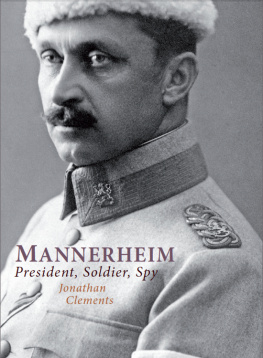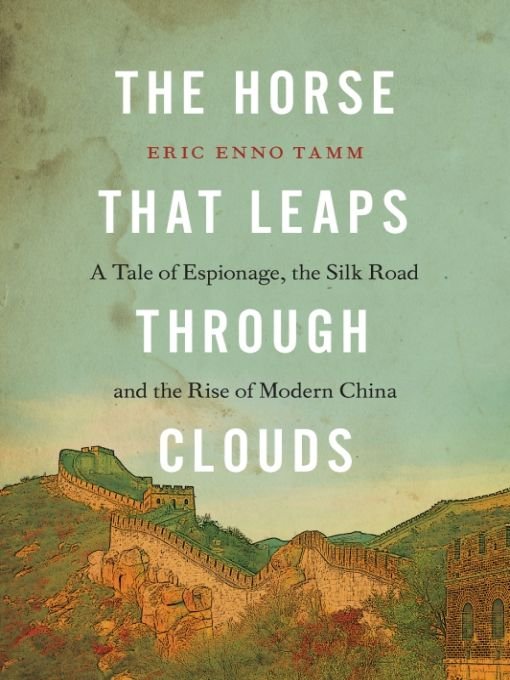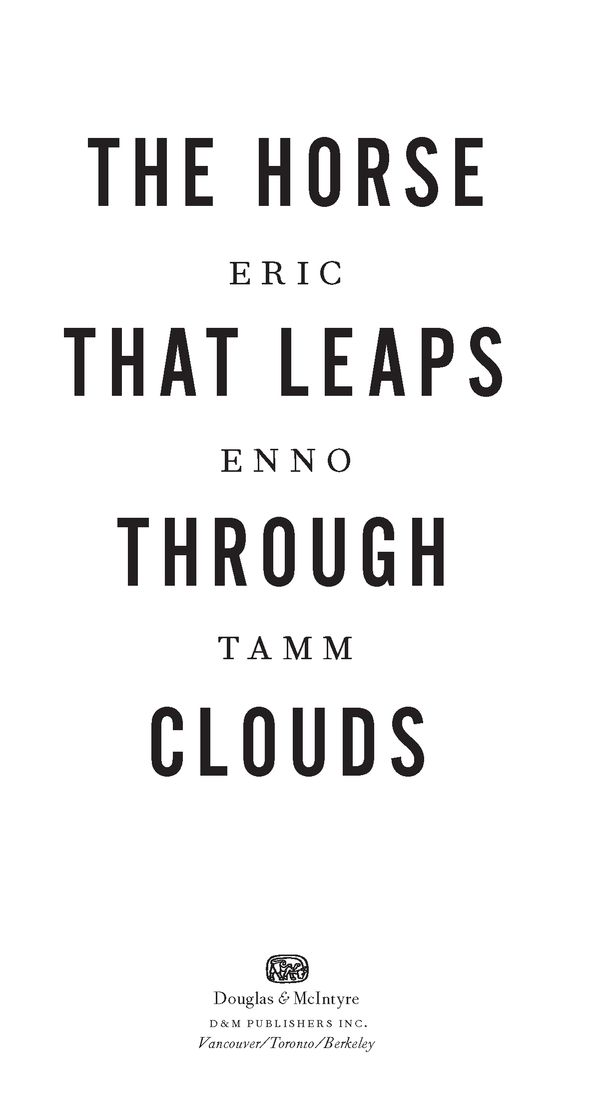Table of Contents
A Tale of Espionage, the Silk Road
and the Rise of Modern China
For Mom and Dad
NOTES
HORSETHATLEAPS.COM
An interactive multimedia website has been launched to engage readers and to complement this book, which chronicles two epic journeys, past and present, along the Silk Roadand offers a cautionary tale about the breathtaking rise of China.
From 1906 to 1908, Baron Gustaf Mannerheim, a Russian spy, trekked from St. Petersburg to Peking as part of a secret intelligence mission to gauge the growing power of China. Along the way, he sketched twenty Chinese garrison towns, took 1,370 photographs and mapped 3,087 kilometres of his route. A century later, with a sketchbook and digital SLR camera in hand, I retraced his journey, taking more than three thousand photographs.
At Horsethatleaps.com, youll find interactive Google maps, historical photographs and slideshows for each chapter. The website also includes videos, graphs, drawings, reviews, news, events, resources and a blog where readers are welcome to post comments and discuss issues raised in the book.
You can also follow me on various social media:
Blog: horesethatleaps.com/blog
Facebook: facebook.com/horsethatleaps
Twitter: twitter.com/ericennotamm
Flickr: flickr.com/ericennotamm
YouTube: youtube.com/ericennotamm
NAMES AND SPELLINGS
Living in central Asia and Chinas borderlands is far more dangerous than just travelling through as a foreigner. Thats especially true if you are a pious Muslim, belong to an ethnic minority or hold views counter to the lunatics, thugs and autocrats who rule this restive region. Accordingly, I have disguised the identities of some of my local guides and helpers, especially those who spoke candidly about their political views. Those identified with both a given name and surname have not been altered.
Personal and geographical names present another challenge. During his trek through China a century ago, Baron Gustaf Mannerheim transliterated Chinese names in his diary using Swedish spellings, which occasionally correspond to the Wade (later Wade-Giles) system of Romanization in use at the time. For other local languages such as Turki, he phonetically spelled names using a mix of French, English, Swedish, Russian and even German, creating a mind-boggling variety of name forms. Finnish philologist Harry Haln has deciphered this morass in an indispensable guide, An Analytical Index to C.G. Mannerheims Across Asia from West to East in 19061908: Places, Persons and General Terms.
Nowadays, the pinyin system, which offers more accurate transliteration, is widely and officially used in China and throughout the world. As a result, many spellings have changed, and some place names have changed entirely since Mannerheims trek. The confusion doesnt stop there: many places go by two names, one Chinese and the other in the language of the local ethnic minority. To reduce confusion, I have elected to use modern pinyin spellings or ethnic minority names, such as Kashgar and Ordos, that are well established. In order to be pedantically precise, Ive kept bygone spellings when directly quoting historical sources. In a few cases, I have used Wade-Giles or Cantonese for proper names such as Tsingtao beer or Sun Yat-sen.
PROLOGUE
Crossing the Mannerheim Line
To know Mannerheim strengthens ones belief in mankind, for he is in fact the chevalier sans peur et sans reproche.former Colonel
PAUL RODZIANKO, Imperial Russian Army (1940)
ON JUNE 4, 1942, Adolf Hitlers private plane, a Focke-Wulf Fw 200 Condor, dropped out of a stormy sky on its descent to an airstrip in Imatra, a picturesque Finnish town about two hundred kilometres from Leningrad, where Nazi troops were laying siege to the beleaguered Soviet city. It was a rare outing for the Reich Chancellor. He had been to Rome, had met his victorious troops in Paris and had made inspection tours in Poland and Russia. But this visit was truly extraordinary and took everyone by surprise: the Fhrer was flying to Finland for a birthday party.
Baron Gustaf Mannerheim, Commander-in-Chief and Marshal of Finland, was turning seventy-five. He had written his sister insisting that any sort of celebration would be in bad taste given the war casualties being suffered by Finns fighting alongside German soldiers. He planned to tour the front lines instead. But at 8 oclock the night before his birthday, Hitlers aide-de-camp, General Rudolf Schmundt, called to say that the Reich Chancellor would be at Mannerheims party the next day. And, the General politely added, he would need to be served a special diet.
Mannerheim greeted Hitler and his entourage in front of a railway dining car hidden in a forest near the airstrip. Inside, the partygoers feasted on a hastily organized luncheon of cabbage pasties, cold salmon with mayonnaise and goose stuffed with apples and baked in cream.
After birthday congratulations, Hitler said how he, an unknown soldier from the First World War, appreciated meeting Mannerheim, a decorated First World War general and Finlands liberator. (In 1918, Mannerheim led Finlands meagre army to defeat socialist insurgents in a civil war and became founding regent of the independent republic.) Hitler then turned to current events. In a low-pitched and somewhat hoarse voice, the Reich Chancellor rambled, repeated himself and frequently paused to collect his thoughts. (Some eleven minutes of this bizarre birthday were secretly taped, the only recording of Adolf Hitler in private conversation. ) The war wasnt going well; his attack on Moscow had turned into a debacle. The number of Soviet tanks they had encountered, Hitler sighed, was a surprise of a most unpleasant nature.
Mannerheim knew well the unpleasantness of Soviet might. Only a few years earlier he had become known around the world for leading Finlands defence against Soviet invasion. For 105 days during the Winter War of 193940, the free world held its breathand stood idly byas one of the worlds smallest and poorest democracies defended itself against the largest and most heavily industrialized empire the Earth had ever seen. Stalin unleashed a quarter of his armed divisions against the Finns, who had no tanks, few planes and many cannons dating from the nineteenth century. History affords few examples of a conflict so overwhelmingly onesided, writes one historian.
Finland eventually sacrificed its eastern province of Karelia but miraculously saved itself. Soviet propagandists and foreign correspondents quickly attributed Finlands success to a defensive line of concrete bunkers and ramparts made of earth and timber stretching eighty kilometres across the Karelian Isthmus. They dubbed it the Mannerheim Line. In reality, as its namesake knew, the hastily reinforced line was too old and too thin to withstand modern artillery. It was the bravery, wits and sisu (guts) of Finnish soldiers that held the lineand halted Communisms advance.
Mannerheim became an instant celebrity for outwitting the Red Army, although some in the West expressed unease about this generalissimo who could have made himself Finlands dictator but did not.












